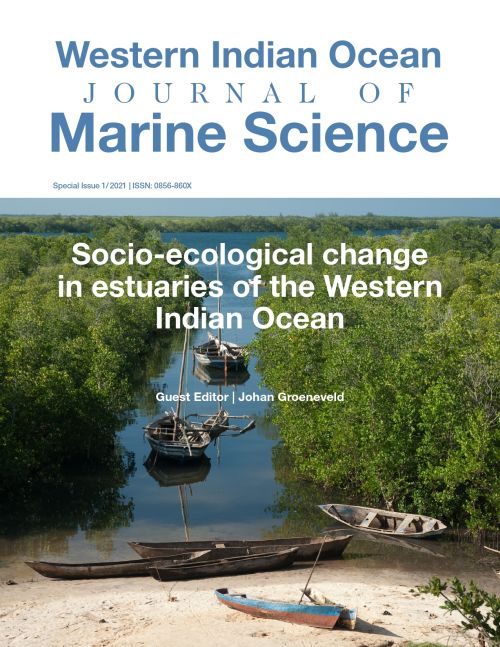Main Article Content
Exploring urbanization and critical habitat loss through land cover change around the Bons Sinais Estuary, Mozambique
Abstract
Estuaries supply direct and indirect multi-sectoral opportunities including for transport, natural resource use and climate protection. These provisions support livelihoods and contribute to social and economic development. The Bons Sinais Estuary in Zambézia Province, central Mozambique, is adjacent to the provincial administrative capital Quelimane, some 25 km from the coast. The rapid growth of Quelimane has increased the demand for natural resources from the estuary, including space, food, fuelwood, transport and raw materials for construction and economic activities. Expansion of the built environment has extended into low-lying lands, mostly within the critical estuarine functional zone with inevitable consequences, such as damage to natural habitats and flooding of occupied areas during rainy seasons. The aim of this study was to analyse three decades of change (1991 – 2018) in land use and land cover (LU/LC) in the Bons Sinais Estuary, focussing on the growth of Quelimane city and the transformation of estuarine and surrounding habitats. The method relied on open-access satellite images and a LU/LC change analysis to quantify the spatio-temporal changes brought about by economic development and related human activities. A combination of low-intensity fieldwork and satellite-derived data (Landsat-5, sensor: Thematic Mapper and Landsat-8; sensors: Operational Land Imager, Thermal Infra-Red Scanner) was used to generate LU/LC information classified according to the features: mangrove trees; wetlands; estuary intertidal areas; built-up area; cultivated trees; and cultivated land. From 1991 onwards, there was an overall increase in cultivated crops (66 %), development (79 %) (including rural human settlements) and intertidal mudflats (12 %) with a concomitant decline in critical wetlands (16 %) and mangroves (12 %). The study predicts a worsening of the impacts on the estuarine ecosystem with further growth of Quelimane city. To reverse the negative trend on estuary health, the recommendation is for management interventions that promote sustainable LU, and urban development plans that consider ecosystem conservation and active restoration.






